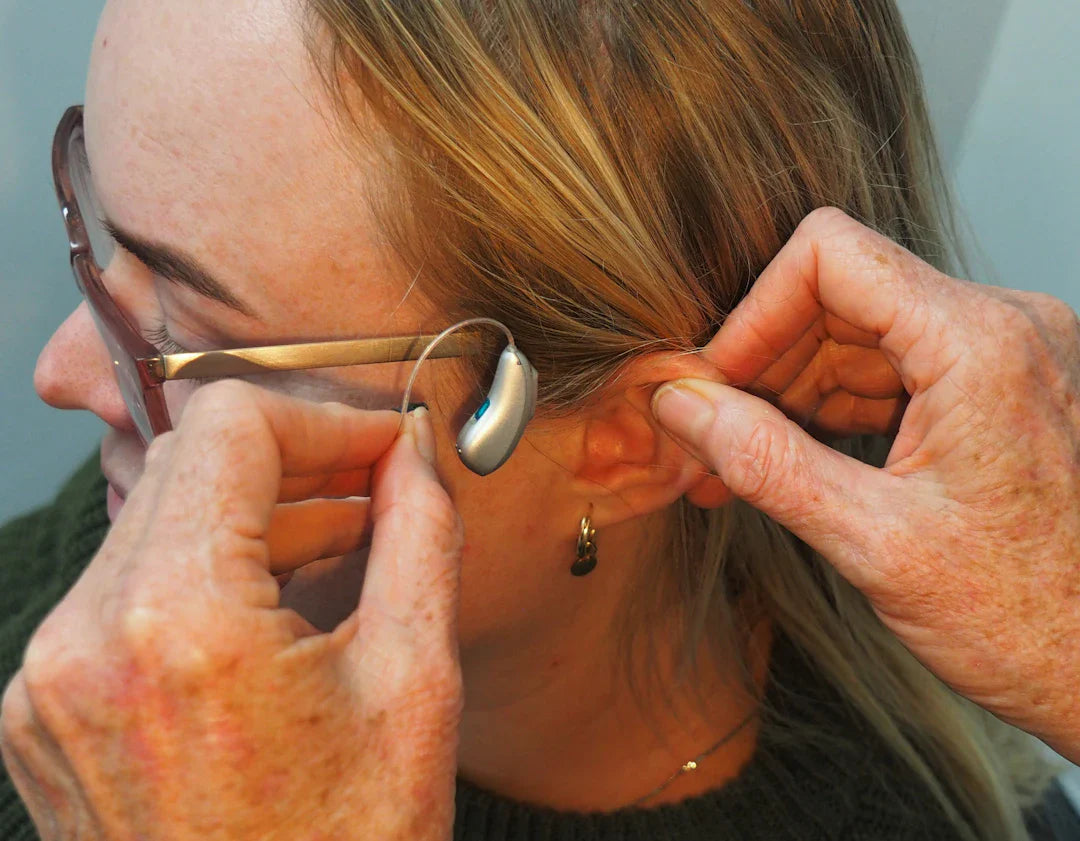Are you experiencing difficulties hearing conversations or struggling to understand the television even with your current hearing aids? It may be time to consider an upgrade. As technology advances, so do the capabilities of hearing aids. Upgrading your hearing aids can provide you with improved sound quality, better features, and enhanced comfort. In this article, we will discuss some signs that indicate it's time to upgrade your hearing aids.
1. Outdated Technology
Hearing aids have come a long way in recent years. New models offer advanced features and improved performance. If you've been using the same hearing aids for several years, it's likely that there are newer models on the market with more sophisticated technology. Upgrading your hearing aids can provide you with better speech recognition, noise reduction, and feedback cancellation, allowing you to hear more clearly and comfortably in various environments.
2. Changes in Your Hearing
Hearing loss is not a static condition. It can change over time, requiring different levels of amplification. If you've noticed a significant decline in your hearing or if your current hearing aids no longer provide sufficient amplification, it's a clear sign that you need to upgrade. An audiologist can conduct a hearing assessment to determine the extent of your hearing loss and recommend appropriate hearing aids.
3. Limited Features
Older hearing aids may lack the features and customisation options available in newer models. Many modern hearing aids offer Bluetooth connectivity, allowing you to stream audio directly from your smartphone or other devices. Some models even have rechargeable batteries, eliminating the need for frequent battery replacements. By upgrading, you can take advantage of these convenient features, making your daily life easier and more enjoyable.
4. Feedback and Whistling
Do your current hearing aids produce annoying feedback or whistling sounds? This can be a sign that they are no longer fitting properly or that they need to be upgraded. Modern hearing aids use advanced algorithms to eliminate feedback and whistling, providing a more comfortable listening experience. Upgrading to newer models can significantly reduce or eliminate these issues.
5. Difficulty Hearing in Noisy Environments
Noise can be a major challenge for individuals with hearing loss. While older hearing aids struggle to differentiate between speech and background noise, newer models are equipped with directional microphones and advanced noise reduction features. These advancements make it easier for you to hear and understand conversations in noisy environments, such as restaurants or crowded gatherings. If you find yourself struggling in these situations, it may be time to upgrade.
6. Earwax Accumulation
Earwax buildup is a common issue that can affect the performance of your hearing aids. Over time, wax can block the sound from reaching the microphones and speakers, resulting in reduced hearing aid effectiveness. Some newer hearing aids come with wax guards or special coatings that help protect against earwax buildup. If you frequently experience issues with earwax accumulation, upgrading to a model with these features can help maintain optimal hearing aid performance.
7. Discomfort or Fit Issues
Wearing the wrong size or style of hearing aids can cause discomfort or fit issues. Everyone's ears are unique, and what worked for you in the past may not be suitable anymore. Upgrading to new hearing aids allows you to find a better fit for your ears, ensuring optimal comfort and performance. Audiologists can help you choose the right style and size to meet your specific needs.
8. New Treatment Options
Advancements in audiology and hearing aid technology have introduced new treatment options for specific hearing conditions, such as tinnitus. Tinnitus is a common condition characterised by a ringing or buzzing sound in the ears. While there is currently no cure for tinnitus, some hearing aids offer masking features that can help reduce the perception of tinnitus sounds. If you suffer from tinnitus and your current hearing aids do not provide any relief, upgrading to models with tinnitus therapy features may be beneficial.
9. Limited Battery Life
Older hearing aids typically rely on traditional disposable batteries, which can be inconvenient to replace regularly. Newer models often come with rechargeable batteries that offer longer battery life and greater convenience. Upgrading to hearing aids with rechargeable batteries can save you time and money spent on purchasing and replacing batteries.
10. Improved Speech Understanding
One of the primary goals of hearing aids is to improve speech understanding. If you find that you are still struggling to understand conversations, especially in challenging listening environments, it may be a sign that your current hearing aids are not providing sufficient speech enhancement. Upgrading to more advanced models can significantly improve speech understanding, allowing you to actively participate in conversations and enjoy social interactions.
11. Lifestyle Changes
Have you experienced any significant lifestyle changes since you last purchased your hearing aids? Changes in work, hobbies, or social activities may require different hearing aid features to meet your specific needs. For example, if you now work in a noisy environment, upgrading to hearing aids with better noise reduction capabilities can significantly enhance your communication abilities.
12. Your Audiologist Recommends Upgrading
Ultimately, your audiologist is the best person to advise you on when to upgrade your hearing aids. Regular visits to your audiologist ensure that they are aware of any changes in your hearing needs and can recommend the most suitable solutions. If your audiologist suggests that it's time to consider an upgrade, it's worth exploring the options available to improve your hearing experience.
Conclusion
Upgrading your hearing aids can be a life-changing decision. By staying up-to-date with the latest advancements in hearing aid technology, you ensure that you have access to the best features and capabilities for your specific hearing needs. If you're experiencing any of the signs mentioned in this article, it's time to consult with your audiologist and discuss the possibility of upgrading your hearing aids. Remember, better hearing leads to a better quality of life.




